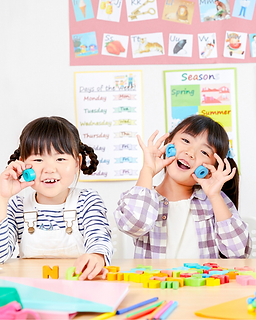
16 June 2025
Talk Like a Pro (Even If You're 7): The Visualization Secret for Kids
Words are powerful. They can create connection, express kindness, and solve problems. And just like learning to ride a bike or play a sport, kids can learn to become strong communicators—with the help of imagination.
Welcome to the world of visualization, where your child’s mind becomes a powerful practice ground for conversations, confidence, and calm.
What is Visualization?
Visualization is like daydreaming with a purpose. It means using your imagination to see something in your mind before it happens—like picturing how to talk to a teacher, ask a friend to play, or solve a disagreement calmly.
When kids visualize positive ways to speak and listen, their brains practice these skills even before they try them in real life. That’s what makes it such a powerful tool for communication.
Why It Works (Science Made Simple!)
The brain can’t always tell the difference between something real and something we imagine clearly. So when your child visualizes speaking with kindness, staying calm, or listening well, the brain begins to form patterns that make those skills easier to use when it really counts.
In other words: imagine it, and you’re already halfway there.
Visualization Techniques for Kids to Build Communication Superpowers
1. The “Conversation Movie” Technique
Help your child picture an upcoming conversation like a movie playing in their mind.
Imagine the setting (home, classroom, playground).
Picture the people involved.
See themselves speaking calmly and clearly.
Imagine listening with kind eyes and open ears.
Play out what might be said, and how they’d respond.
Why it helps: This builds confidence and lowers nervousness about talking in new or tricky situations.
2. The “Kind Listener” Visualization
Before playdates or group activities, invite your child to close their eyes and imagine:
Their body still and facing the speaker.
Eyes looking gently at the person.
Hands calm, no fidgeting.
Saying things like “I understand” or “Tell me more.”
Why it helps: Listening is a superpower. Practicing it mentally makes it feel more natural in real life.
3. The “Pause Button” Practice
If your child sometimes interrupts, reacts too quickly, or says things they regret, try this:
Picture a big glowing Pause Button in their mind.
Imagine pressing it before speaking.
Breathe. Think. Then respond with calm words.
Why it helps: This builds emotional regulation and teaches kids that they can choose their words.
4. The “I Can Say It” Mirror Game
Let your child stand in front of a mirror and imagine:
Saying something brave like “I need help,” or “I don’t like that.”
Picture the other person listening and understanding.
See themselves standing tall, using a clear and kind voice.
Why it helps: This builds assertiveness—helping children express needs and boundaries with confidence.
5. The “Empathy Glasses” Tool
Empathy means understanding how others feel. To build this skill:
Ask your child to picture wearing special “Empathy Glasses.”
Imagine being the other person in the conversation.
How might they feel? What might they need to hear?
Why it helps: Strong communicators care about others' feelings. Visualization helps kids practice emotional understanding.
Parent Tip: Practice Together
Visualization works best when it’s short, simple, and playful. You don’t need to be a therapist or mindfulness expert—just sit with your child, guide them with gentle questions, and let them imagine.
Make it part of the bedtime routine, after-school check-ins, or quiet moments together. Your child’s brain is naturally creative—visualization just helps them use it with intention.
Final Thoughts
Great communicators aren’t born—they’re practiced. With a little imagination, your child can grow the skills to speak with confidence, listen with empathy, and connect with others in meaningful ways.
So next time your child is nervous about talking to someone or unsure how to say what they feel, invite them to close their eyes, take a deep breath, and picture their best self speaking with heart. That’s the power of visualization.
You might also like...
3 Fun Ways to Teach Communication in Classrooms
The Surprising Psychology of Puzzles
Why Mindfulness Worksheets Help Kids Regulate Emotions


